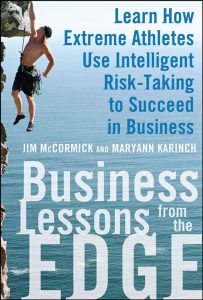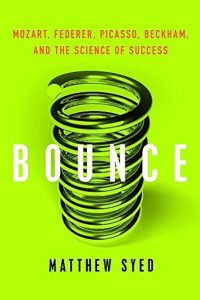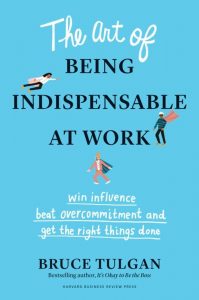 Book Review: “The Talent Delusion: Why Data, Not Intuition, Is the Key to Unlocking Human Potential” by Tomas Chamorro-Premuzic
Book Review: “The Talent Delusion: Why Data, Not Intuition, Is the Key to Unlocking Human Potential” by Tomas Chamorro-Premuzic
“The Talent Delusion” by Tomas Chamorro-Premuzic offers a thought-provoking exploration of talent management and its impact on organizations. The preface sets the stage, highlighting the prevalent problems faced by organizations when it comes to managing their people. Despite the significant role that psychology can play in solving these issues, many organizations rely on intuition rather than data-driven approaches, resulting in wasted resources and disenchanted employees.
In Chapter One, Chamorro-Premuzic presents an update on the war for talent, emphasizing the growing importance of attracting, developing, and engaging top employees. However, there is a paradoxical situation where most companies feel ill-equipped to address these challenges, leading to widespread dissatisfaction in the workplace. The chapter sheds light on the disheartening trends of job dissatisfaction, passive job-seeking behavior, and a rise in entrepreneurial intentions due to unhappy work experiences. To reverse these circumstances and truly win the war for talent, a deeper understanding of the science of talent is needed.
Chapter Two focuses on defining talent, offering four simple definitions that provide insight into its nature. These definitions include the rule of the vital few, maximum performance rule, effortless performance rule, and the concept of talent being personality in the right place. Chamorro-Premuzic explains how these principles can be applied in any field, profession, or industry to evaluate an individual’s talent relative to a normative group. Understanding these principles is crucial for organizations to identify and predict talent accurately.
Chapter Three delves into measuring talent, addressing the key questions of what to assess and how to do it. By breaking down talent into its components, such as being rewarding to deal with, able to do the job, and willing to work hard (RAW), organizations can quantitatively assess an individual’s talent. The chapter explores various methodologies, including structured interviews, prolonged assessments, IQ tests, and personality assessments, highlighting the importance of applying scientific approaches in real-world work settings.
Chapter Four focuses on workplace motivation and engagement, emphasizing the alignment of employees’ values with the organization’s culture as a key driver for boosting engagement. Chamorro-Premuzic suggests that leaders play a crucial role in shaping organizational culture and fostering employee enthusiasm and energy.
In Chapter Five, the author explores talent development and the role of coaching interventions in enhancing employee performance. Effective coaching, which addresses both strengths and weaknesses, can significantly contribute to talent development and improved performance. The chapter emphasizes reputation management and the positive influence it can have on employees’ perceptions among their peers and managers.
Chapter Six delves into the dark side of talent, shedding light on undesirable and counterproductive tendencies that talented individuals may exhibit. The discussion revolves around counterproductive work behaviors and the correlation with dark side personality qualities. The chapter highlights the toxic nature of these characteristics, particularly when displayed by individuals in leadership positions.
Chapter Seven looks into the future of talent management, discussing emerging trends and the potential impact of technology on talent identification and management practices. The chapter predicts changes in workplace experiences, such as generational shifts and the importance of self-awareness, curiosity, and entrepreneurship as key competencies.
The final chapter offers concluding remarks, emphasizing the need for progress in talent management interventions. Chamorro-Premuzic emphasizes the importance of data-driven approaches and warns against the pitfalls of overestimating knowledge and overrating personal talents. The ultimate goal for organizations is not just to make employees happy but to enable them to perform beyond expectations and achieve greatness.
“The Talent Delusion” challenges traditional approaches to talent management and provides a compelling argument for data-driven decision-making. Chamorro-Premuzic’s insights, supported by scientific research, offer valuable guidance for organizations seeking to unlock human potential. By adopting a more scientific and strategic approach to talent management, organizations can spot, attract, and retain top talent, driving their success and achieving exceptional results.
#BookReview #TalentManagement #DataDrivenDecisions #UnlockHumanPotential
 Gardner presents seven powerful “levers” for changing minds, examining their application across various levels of mind change.
Gardner presents seven powerful “levers” for changing minds, examining their application across various levels of mind change.
 “Change Anything: The New Science of Personal Success” offers a groundbreaking approach to personal transformation and achieving lasting change. Authored by a team of renowned experts including Kerry Patterson, Joseph Grenny, Ron McMillan, Al Switzler, and David Maxfield, this book provides invaluable insights and practical strategies to overcome obstacles and create meaningful change in various aspects of life.
“Change Anything: The New Science of Personal Success” offers a groundbreaking approach to personal transformation and achieving lasting change. Authored by a team of renowned experts including Kerry Patterson, Joseph Grenny, Ron McMillan, Al Switzler, and David Maxfield, this book provides invaluable insights and practical strategies to overcome obstacles and create meaningful change in various aspects of life. What are the 10 Common Mistakes of Newly Appointed Managers
What are the 10 Common Mistakes of Newly Appointed Managers “Extreme Athletes Use Intelligent Risk Taking to Succeed in Business” is an extraordinary book that delves into the world of athlete-executives who have pushed past normal limits of human performance in both the athletic and business realms.
“Extreme Athletes Use Intelligent Risk Taking to Succeed in Business” is an extraordinary book that delves into the world of athlete-executives who have pushed past normal limits of human performance in both the athletic and business realms. “Best Practices in Talent Management”
“Best Practices in Talent Management”  Book Review: “The Talent Delusion: Why Data, Not Intuition, Is the Key to Unlocking Human Potential” by Tomas Chamorro-Premuzic
Book Review: “The Talent Delusion: Why Data, Not Intuition, Is the Key to Unlocking Human Potential” by Tomas Chamorro-Premuzic “HR Transformation: Building Human Resources from the Outside In” offers a comprehensive guide to successfully undertaking HR transformation within organizations. Authored by a team of experienced HR professionals, including Dave Ulrich and Justin Allen, this book provides valuable insights and practical advice for avoiding common pitfalls and implementing effective HR transformation strategies.
“HR Transformation: Building Human Resources from the Outside In” offers a comprehensive guide to successfully undertaking HR transformation within organizations. Authored by a team of experienced HR professionals, including Dave Ulrich and Justin Allen, this book provides valuable insights and practical advice for avoiding common pitfalls and implementing effective HR transformation strategies. “Brandwashed: Tricks Companies Use to Manipulate Our Minds and Persuade Us to Buy” by Martin Lindstrom is a groundbreaking book that delves into the captivating world of marketing and consumer behavior. Known for his previous work “Buyology,” Lindstrom once again unveils the secrets behind the psychological strategies employed by companies to influence our purchasing decisions. Drawing on his extensive experience in the branding industry, Lindstrom exposes the intricate web of techniques and tactics utilized to win over our hard-earned dollars.
“Brandwashed: Tricks Companies Use to Manipulate Our Minds and Persuade Us to Buy” by Martin Lindstrom is a groundbreaking book that delves into the captivating world of marketing and consumer behavior. Known for his previous work “Buyology,” Lindstrom once again unveils the secrets behind the psychological strategies employed by companies to influence our purchasing decisions. Drawing on his extensive experience in the branding industry, Lindstrom exposes the intricate web of techniques and tactics utilized to win over our hard-earned dollars. In “Bounce,” Matthew Syed, a three-time Commonwealth table tennis champion and two-time Olympian, delves into the rules of success and challenges the notion of talent. Drawing inspiration from Malcolm Gladwell’s concept of the “10,000 hours rule” in his book “Outliers,” Syed explores the power of practice and the role it plays in achieving excellence.
In “Bounce,” Matthew Syed, a three-time Commonwealth table tennis champion and two-time Olympian, delves into the rules of success and challenges the notion of talent. Drawing inspiration from Malcolm Gladwell’s concept of the “10,000 hours rule” in his book “Outliers,” Syed explores the power of practice and the role it plays in achieving excellence.